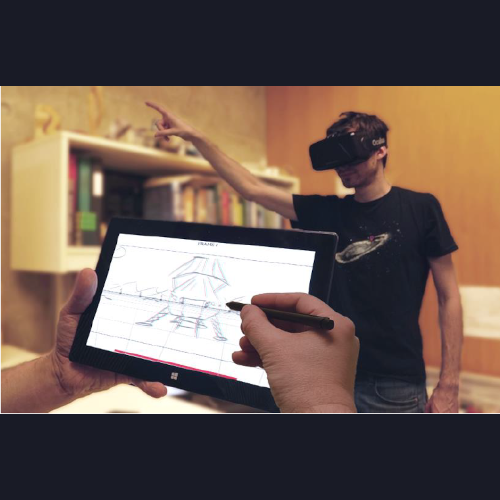Multi-Device Storyboards for Cinematic Narratives in VR





This project was the 2nd part of my PhD Thesis.
The focus of this work was to enabling storyboards for VR.
The goal was to allow storyboard artists and directors to work together, with the director in a Virtual (VR) environment, and the artist on a sketch surface which is both fast, and something the artist was already familiar.
The paper discussing this project in detail can be downloaded from here





